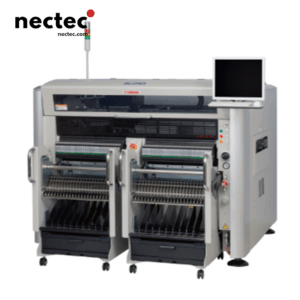In today’s fast-paced industrial landscape, efficiency and precision are paramount. Manufacturers are constantly seeking technological advancements that streamline processes, minimize waste, and enhance productivity. One such advancement is the vacuum pick and place machine, a device that has revolutionized assembly lines and manufacturing operations across numerous sectors.
Understanding Vacuum Pick and Place Machines
Vacuum pick and place machines are designed to automate the transfer of objects from one location to another. Using vacuum technology, these machines grip items such as electronic components, packaging materials, and fragile products without causing damage. This technology not only enhances the operational efficiency but also reduces the chances of human error during assembly.
Cómo funcionan
The operation of a vacuum pick and place machine is straightforward yet sophisticated. The machine typically comprises a series of suction cups mounted on an automated arm. When the arm approaches an object, a vacuum is generated within the cup, creating a pressure difference that allows the cup to adhere to the item. Once securely attached, the arm moves to a predefined location where the object is placed with precision.
Aplicaciones en todos los sectores
The versatility of vacuum pick and place machines makes them suitable for various industries, including:
- Electrónica: Used to position and place delicate electronic components on circuit boards with high accuracy.
- Comida y bebida: Ideal for handling food products and packaging, ensuring cleanliness and efficiency.
- Productos farmacéuticos: Crucial for the moving and packing of sensitive medicines and vials.
- Automóvil: Employed in assembling parts with precision to maintain quality standards.
Benefits of Vacuum Pick and Place Technology
The integration of vacuum pick and place machines into manufacturing processes offers numerous benefits:
- Aumento de la productividad: Automated systems can operate continuously, leading to higher output rates compared to manual labor.
- Precisión mejorada: These machines provide consistent placement accuracy, vital for assembling intricate components.
- Reducción de los costes laborales: Automation reduces the reliance on manual labor, cutting costs associated with hiring and training workers.
- Mayor seguridad: Vacuum systems minimize the risk of injury associated with manual handling of heavy or delicate items.
- Flexibilidad: Many models offer adjustable settings to handle a wide range of products and sizes.
Choosing the Right Vacuum Pick and Place Machine
When selecting a vacuum pick and place machine, various factors must be considered to ensure it meets your operational needs:
1. Capacidad de carga
Assess the weight and size of the items you’ll be handling. Ensure that the machine you choose can accommodate your products without strain.
2. Vacuum Power
The suction strength is crucial for securely gripping items, especially those with irregular shapes or surfaces. Look for machines that offer adjustable vacuum levels.
3. Speed and Cycle Time
Evaluate how quickly the machine can pick and place items. This is particularly important in high-speed environments where time is critical.
4. Integración de software
Choose machines that offer easy integration with your existing manufacturing or inventory management systems for streamlined operations.
The Future of Vacuum Pick and Place Machines
As technology continues to evolve, so do vacuum pick and place systems. The advent of artificial intelligence and machine learning is beginning to influence how these machines operate. Smart systems equipped with advanced sensors can now analyze components in real time, leading to greater adaptability and efficiency. Moreover, the integration of IoT (Internet of Things) capabilities allows for remote monitoring and diagnostics, making it easier for companies to maintain their equipment.
Innovation in Design
Manufacturers are also focusing on improving the design of these machines. Lightweight materials, energy-efficient motors, and compact configurations are becoming standard to enhance usability and reduce energy consumption. Additionally, innovations such as modular designs allow companies to scale their operations easily without extensive downtime or investment.
Industrial Case Studies
Several companies have successfully adopted vacuum pick and place machines, showcasing the significant benefits they bring:
Electronics Manufacturer
An electronics manufacturer reported a 30% increase in productivity after transitioning to an automated vacuum pick and place system. The reduction in manual handling not only sped up the assembly process but also cut down on defects, leading to higher quality products.
Food Processing Plant
A food processing plant improved its packaging line efficiency by incorporating a vacuum pick and place machine. The automation of packaging reduced labor costs and minimized packaging errors, thereby enhancing overall operational efficiency.
Retos comunes y soluciones
While vacuum pick and place machines present numerous advantages, challenges do exist. Understanding these common issues can help businesses find effective solutions:
1. Product Variation
Handling diverse product types may result in inconsistent performance. Implementing adjustable features and training staff on machine operation can mitigate this issue.
2. Maintenance Needs
Regular maintenance is essential to keep vacuum systems operational. Establishing a routine check-up schedule can help detect potential issues before they affect productivity.
3. Cost of Investment
The initial investment in automation may be significant. However, the long-term savings in labor costs and operational efficiency often justify the expenditure.
The Impact of Automation on Workforce Dynamics
As automation becomes more prevalent in manufacturing, there are profound implications for the workforce. While some fear job loss due to machines taking over tasks, it’s important to recognize that automation can create new opportunities. Workers can be trained in more specialized roles, focusing on machine maintenance, programming, and other skills that machines cannot replicate.
Upskilling Opportunities
Investing in workforce training not only helps employees adapt to new technology but also enhances job satisfaction and retention. Companies that prioritize skilled workforces will likely outperform those that don’t, as they will have personnel capable of maximizing the potential of advanced machinery.
Reflexiones finales
The vacuum pick and place machine exemplifies how technology is transforming manufacturing. With increased efficiency, reduced labor costs, and the potential for enhanced safety, these machines are becoming indispensable in modern industrial processes. As technological advancements continue to evolve, businesses embracing these changes will not only remain competitive but also lead the way toward innovation in their respective industries.








